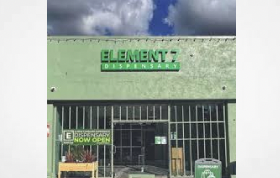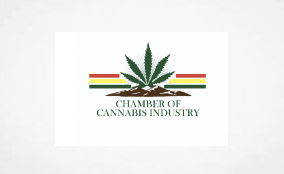Contents
- 1.Proposal to increase the THC content from 0.2% to 0.3%
- 2.Proposal to amend the 2010 (Fees) Regulations so that the lower fee of £580 applies to licences issued for the cultivation of any plant within the scope of the proposed revised industrial hemp licensing policy
- References
ACMD Chair: Prof Owen Bowden-Jones
Technical Committee Secretary: Zahi Sulaiman /Lydia Chaloner
1st Floor (NE), Peel Building
2 Marsham Street
London
SW1P 4DF
Rt Hon Dame Diana Johnson DBE MP
Minister for Policing, Fire and Crime Prevention
2 Marsham Street
London
SW1P 4DF
23 October 2024
Dear Minister,
Re: Reform to the fees applicable under the hemp licensing regime
On 9 April 2024 the Advisory Council on the Misuse of Drugs (ACMD) was commissioned to provide advice on a proposal to amend the licensing regimen for industrial hemp. Industrial hemp has several legitimate purposes, including the construction and textiles industries and could potentially have environmental benefits through promoting carbon capture, rather than for any psychoactive or therapeutic effect.
Both hemp and traditional herbal cannabis are derived from the plant species Cannabis sativa L. (cannabis). Delta-9-tetrahydrocannabinol (THC) is the main psychoactive component of cannabis, but over 100 other cannabinoids have been reported to be present in the plant. In the 1970’s a threshold of THC 0.3% weight by weight (w/w) dry weight in the leaves and flowering parts of the plant was proposed to differentiate the “non-drug” subspecies sativa from the “drug” subspecies indica [Small & Cronquist, 1976].
Industrial hemp contains a low level of detectable THC, by dry weight (typically less than 1%). In comparison traditional herbal cannabis can contain THC concentrations above 10% [Freeman et al, 2018]. Seed varieties that limit the THC content within the plant are selected when growing hemp, whereas traditional herbal cannabis producers seek to maximise the THC content to produce a psychoactive effect [DeCarlo and Weaver, 2023].
Cannabis is a Class B controlled drug under Schedule 2, Part II, of the Misuse of Drugs Act 1971 (MDA 1971). It is also listed in Schedule 1 to the Misuse of Drugs Regulations 2001 (MDR 2001) and designated under the Misuse of Drugs (Designation) (England, Wales and Scotland) Order 2015 (2015 Order). Hence, it is unlawful to possess, supply, produce, import or export cannabis except under a Home Office licence. It is also an offence to cultivate any plant of the genus Cannabis except under a Home Office licence. Subject to fulfilling all requirements, the Home Office issues licences that permit the cultivation of cannabis plants with a low THC content to produce hemp fibre for industrial purposes or obtaining seeds that are then pressed for their oil. These licences enable use of non-controlled parts of the plant (i.e., seeds and fibre/mature stalk only) but do not permit use of other parts of the plant (i.e., the leaves and flowers).
1. Proposal to increase the THC content from 0.2% to 0.3%
The commission proposed increasing the maximum THC permitted in seed types used to grow industrial hemp varieties in the UK from the current level of 0.2% to 0.3%. Although there is a lack of an internationally agreed standard, examples in other countries have shown there to be some convergence to either THC contents of 0.3% or 1% (see Table 1) [DeCarlo and Weaver, 2023]. Raising the level to THC 0.3% would bring the UK in line with the European Union as well as countries such as the US, Canada and China. In the North American hemp market, there have been no health problems reported in the last 12 years.
Table 1 – Current permitted THC levels in industrial hemp internationally (adapted from DeCarlo and Weaver, 2023)
| 0.2% (or less) | 0.3% | At or below 1% |
|---|---|---|
| UK (0.2%) Israel (0.2%) Ukraine (less than 0.08%) South Africa (less than 0.01%) |
European Union United States Canada China Ghana Zambia |
Switzerland Australia Italy (0.6 %%) Columbia Ecuador Lebanon Mexico Malawi New Zealand Peru Thailand Uruguay Zimbabwe Paraguay (less than 0.5%) |
There may be potential economic and environmental benefits to an increase in the maximum THC content in industrial hemp which is expected to provide growers with access to substantially more hemp varieties [Madden et al, 2022]. The proposed increase in THC content would also increase the markets to which the UK could export industrial hemp.
There may be risks to increasing the maximum THC content permitted in industrial hemp. Naturally occurring cannabinoids, such as cannabidiol, can be extracted from industrial hemp, and chemically modified to create THC and semi-synthetic cannabinoids, including hexahydrocannabinol [European Monitoring Centre for Drugs and Drug Addiction and Europol 2024]. The EU only increased the permitted THC content from 0.2% to 0.3% in 2023. We are not aware of any evidence as to the impact this change has had on diversion at present. Hence, any change to permitted THC content in industrial hemp in the UK should be monitored for any unintended consequences. In addition, the ACMD will shortly be assessing the harms of semi-synthetic cannabinoids, including hexahydrocannabinol. Should the evidence base change, we will update our advice accordingly.
Conclusion 1
The ACMD is supportive of the proposed change to increase the maximum THC content of industrial hemp grown outdoors for seed production or in order to use the non-controlled parts of the plant to produce fibre for use in the construction and textile industries from 0.2 to 0.3%, as the potential benefits outweigh an increased risk of harms.
Recommendation 1
The Home Office to conduct an assessment of the impact of the legislative change after two years.
Lead: Home Office
Measure of outcome: Published assessment of the impact of the legislative change.
2. Proposal to amend the 2010 (Fees) Regulations so that the lower fee of £580 applies to licences issued for the cultivation of any plant within the scope of the proposed revised industrial hemp licensing policy
Paragraph 2(2) of The Misuse of Drugs (Licence Fees) Regulations 2010 refers to a licence to cultivate plants of the genus Cannabis, under regulation 12 of the 2001 Regulations (cultivation under licence of cannabis plant), issued to a person for the first time, the fee payable shall be:
(a) in the case of any such plant with a THC content not exceeding 0.2%, £580; and
(b) in the case of any such plant with a THC content exceeding 0.2%, £4,700.
Raising the maximum permitted amount of THC should not create barriers for a person (for the first time) for those using seed varieties with THC content greater than 0.2%.
Conclusion 2
The ACMD foresees no issues with applying the lower fee of £580 to a raised level of THC not exceeding 0.3%, to align with other international examples.
We look forward to discussing this advice with you in due course.
Yours sincerely,
Professor Owen Bowden-Jones, Chair of the ACMD
Professor Roger Knaggs, Chair of the ACMD Technical Committee
References
European Monitoring Centre for Drugs and Drug Addiction and Europol. (2024). EU Drug Markets Analysis: Key insights for policy and practice.
Freeman, T. P., Groshkova, T., Cunningham, A., Sedefov, R., Griffiths, P., Lynskey, M. T. (2018). ‘Increasing potency and price of cannabis in Europe, 2006-16’. Addiction. 114, pp 1015 – 1023.
DeCarlo, S., Weaver, M. (2023). ‘Keeping the High out of Hemp: Global THC Standards, Executive Briefings on Trade, US International Trade Commission.
Small, E., Cronquist, A. (1976). ‘A practical and natural taxonomy for cannabis’. Taxon. 25(4), pp 405-435.
Madden, S. M., Ryan, A., Walsh, P. (2022). ‘A Systems Thinking Approach Investigating the Estimated Environmental and Economic Benefits and Limitations of Industrial Hemp Cultivation in Ireland from 2017-2021’. Sustainability. 14, p 4159.


















